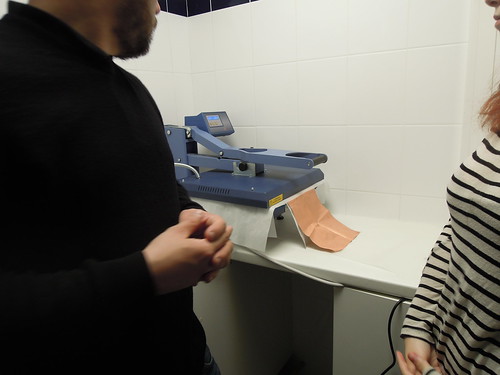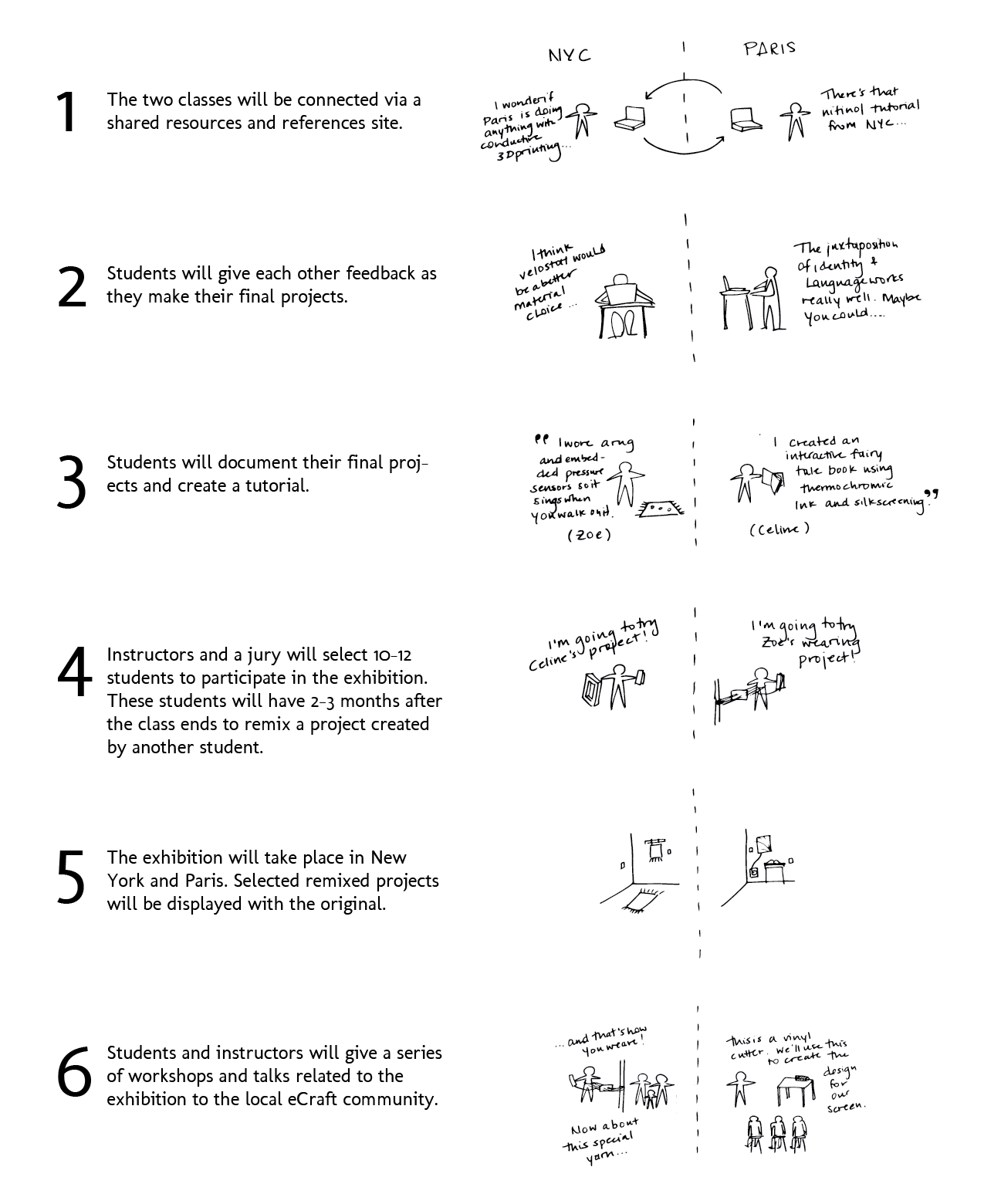Basic of electricity & electronic
Electronic Paper & origami
This presentation show some examples of project combining electronic and paper.
Tutorial for simple paper circuit.
http://cdn.makezine.com/uploads/2014/07/papercircuits.pdf
This tutorial gives an overview of paper engineering with resources and sample projects for inspiration.
The Fine Art of Electronics
http://simonetti.media.mit.edu/~jieqi/
Folding pattern examples
http://www.korthalsaltes.com/selecion.php?sl=new
Switches & simple circuit
This tutorial explains the basics of electricity with an overview of conductive materials, techniques for making circuit traces, and series/parallel circuit construction.
This tutorial explains the basics of switches and buttons, illustrates different categories, and gives examples of corresponding soft switches.
Keyboard Hacking
Etextile And Soft Sensors
This presentation present a short history of the eTextile with actuels examples.
Tutorials for sensor and switches on instructables from Plusea:
Neoprene Bend Sensor
Conductive Thread Pressure Sensor
Three Fabric Buttons
Flexible Fabric Touch Pad
Textilo
Using heat press to the school set up to 100° for 40 sec to stick the fusible glue paper to the conductive fabric.
To cut the neoprene, we use the felt setup.
To cut the conductive fabric (flectron) with the fusible glue paper, choose balistic nylon thickness 0.20mm and +50% vector cutting.
Arduino “LilyPad”
The LilyPad Arduino is a variation of a classic arduino platform designed for e-textiles and wearables projects. It can be sewn to fabric and similarly mounted power supplies, sensors and actuators with conductive thread. It has been created by Leah Buechley at the MIT MediaLab in the High-Low Tech research group.
Official website:
http://lilypadarduino.org/
Flip-Flop
In this session, we will create a project around the concept of Flip-Flop, which is explain in the following presentation.
To make it we will use processing software:
We are going to use to option to connect processing to your lilypad arduino and create connection between physical and digital world, serial communication and firmata +
arduinoProcessingPrint3D from Studio Objet Augmente on Vimeo.
Final Project
Overview
The theme of the final project is In Process. Over this course, we have discussed and examined processes of different practices and how to apply them to new tools, materials, ideas. We have also discussed how these tools, materials, and ideas influence process, especially in spaces where two processes collide (i.e. sewing and electronics, papercraft and interactive design). For your final project, you may choose whatever concept you like. As you move through this project, you should all consider your process deeply. Be critical of how you are approaching your concept, research, prototyping, and execution. Some questions to consider include: how do materials communicate to ideas? Do materials determine practice? What tools do you use and why? What tools do you want? What theoretical frameworks are you pulling from? How does the audience you are designing for impact your process?
Reprise
You may choose your concept for the final project. It must address ideas, processes, tools, and/or materials we have surveyed over the course. You will be graded on your implementation of the materials and processes we have been studying throughout the semester. You may work alone or collaboratively (team of 2 max). Below are the deliverables and calendar for the last three (!) classes.
Deliverables
- Working prototype
- In-class 8-10 minute presentation
- Video and image documentation
- Blog post containing all relevant links and reflection on your process
- Instructable documenting how you made it
- At least 1 feedback sessions to a Computional craft student in Parsons New York (these can be written via email or class blog or done through skype) – this will be due prior to the final and I will help you link to a student/project there. (See schedule below)
Final calendar
- Nov 19 – Concept Proposal (working title, short paragraph, 1-2 precedents, at least one rough sketch)
- Nov 26 – Updated Concept + Prototype
- Dec 3 – Prototypes for in class feedback
- Dec 10 – Prototypes + feedback to Computional craft
- Dec 17 – Final + celebration!
Big Picture
As I mentioned, this is in collaboration with the Computional craft course (go to “Workshops” category to see work) at Parsons New-York. It will culminated in an exhibition and workshop/speaker series this spring. This is also part of a larger project called Crafting Tech that hopes to serve as an open platform for eCraft teachers and learners around the world to use in their classrooms and learning spaces.


